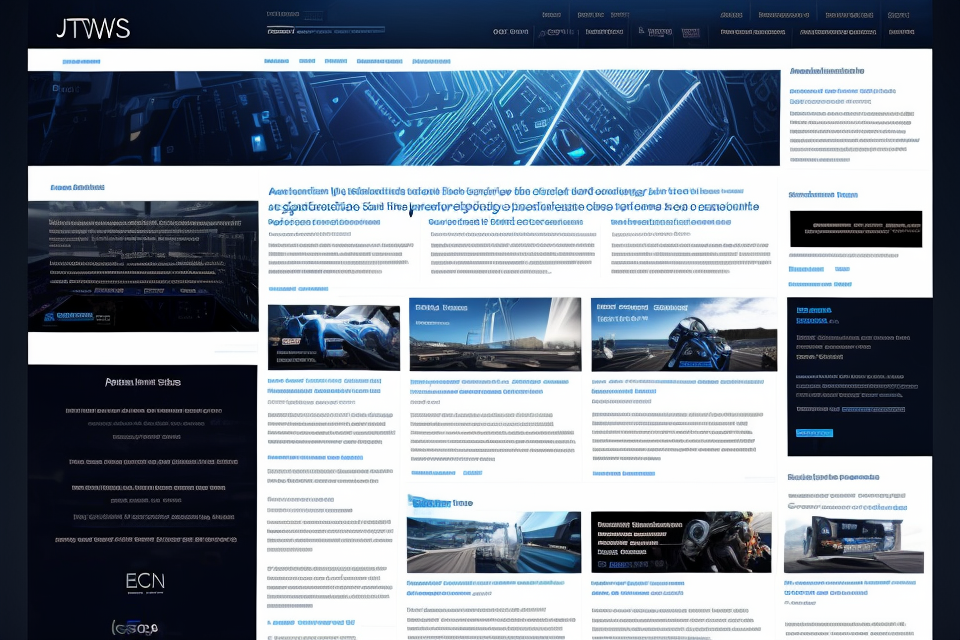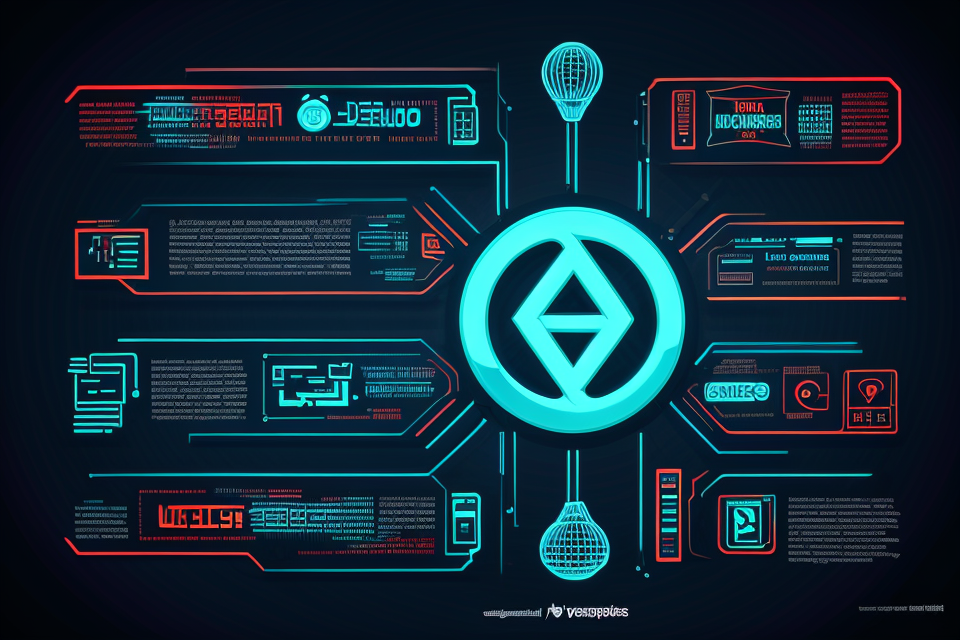In today’s fast-paced world, technology is constantly evolving and improving. Introducing new technology can bring many benefits to a business or organization, such as increased efficiency, cost savings, and improved customer experience. However, introducing new technology can also be a challenging process that requires careful planning and execution. This guide will provide you with a comprehensive overview of how to successfully introduce new technology, from assessing the need for change to implementing and training staff on the new technology. Whether you’re introducing a new software system or upgrading your hardware, this guide will help you navigate the process with ease. So, let’s dive in and explore the steps you need to take to ensure a smooth and successful technology introduction.
Planning and Preparation
Assessing the Need for New Technology
Identifying Current Technology Limitations
One of the first steps in assessing the need for new technology is to identify the limitations of the current technology. This includes analyzing the speed, efficiency, and reliability of the current technology. It is important to determine whether the current technology can meet the needs of the business or if there are areas where it falls short.
Researching Emerging Technologies
Another important step in assessing the need for new technology is to research emerging technologies. This involves keeping up-to-date with the latest advancements in technology and determining which of these advancements could benefit the business. It is important to consider the cost and feasibility of implementing new technology, as well as the potential benefits it could bring.
Prioritizing Business Needs
When assessing the need for new technology, it is important to prioritize the needs of the business. This includes identifying areas where technology could improve efficiency, productivity, or customer satisfaction. It is important to consider the overall goals of the business and how new technology could help to achieve these goals.
By following these steps, businesses can effectively assess the need for new technology and determine whether it is a viable option for improving their operations.
Developing a Strategic Plan
Developing a strategic plan is a crucial step in successfully introducing new technology. This plan should outline the goals and objectives of the technology implementation, create a project timeline, and allocate resources and budget.
Establishing clear goals and objectives
The first step in developing a strategic plan is to establish clear goals and objectives for the technology implementation. These goals should be specific, measurable, achievable, relevant, and time-bound (SMART). By setting SMART goals, the organization can ensure that the technology implementation is aligned with its overall business strategy and will provide tangible benefits.
For example, a goal for implementing a new customer relationship management (CRM) system might be to increase customer retention by 10% within the first year of implementation. This goal is specific, measurable, achievable, relevant, and time-bound, making it a SMART goal.
Creating a project timeline
Once the goals and objectives have been established, the next step is to create a project timeline. This timeline should outline the key milestones and activities that need to be completed in order to successfully implement the new technology. It should also take into account any potential roadblocks or risks that may arise during the implementation process.
The project timeline should be realistic and achievable, taking into account the resources and budget that have been allocated for the technology implementation. It should also be flexible enough to accommodate any changes or unexpected events that may occur during the implementation process.
Allocating resources and budget
Finally, the strategic plan should include an allocation of resources and budget for the technology implementation. This should include the cost of the technology itself, as well as any additional resources that may be required, such as training and support.
It is important to ensure that the budget is realistic and takes into account any potential risks or unexpected costs that may arise during the implementation process. The budget should also be allocated in a way that ensures that the technology implementation is aligned with the organization’s overall business strategy and goals.
Communicating the Need for Change
When introducing new technology, it is crucial to effectively communicate the need for change to stakeholders. This can be achieved by following these steps:
Building a Business Case for New Technology
A business case is a formal document that outlines the benefits, costs, and risks associated with a new technology initiative. It is essential to create a strong business case to convince stakeholders of the value of the new technology. The business case should include the following components:
- An overview of the current technology landscape and how it supports or hinders the organization’s goals
- A detailed description of the proposed technology and its benefits
- A cost-benefit analysis that compares the costs of implementing the new technology with the potential benefits
- A risk assessment that identifies potential risks and outlines strategies for mitigating them
Educating Stakeholders on the Benefits of New Technology
Once the business case has been developed, it is important to educate stakeholders on the benefits of the new technology. This can be achieved through various communication channels, such as presentations, workshops, and training sessions. It is essential to tailor the communication to the needs and preferences of different stakeholder groups, such as executives, managers, and end-users.
Addressing Potential Concerns and Resistance
It is natural for stakeholders to have concerns and resistance to change when introducing new technology. It is essential to anticipate and address these concerns proactively to ensure a smooth implementation process. Some common concerns and resistance include:
- Fear of job loss or changes in job responsibilities
- Concerns about the impact on privacy or security
- Resistance to change from entrenched processes or systems
To address these concerns, it is important to involve stakeholders in the decision-making process, provide training and support, and communicate the benefits of the new technology clearly and consistently. Additionally, it is essential to have a plan in place to address any issues that may arise during the implementation process.
Implementation
Choosing the Right Technology Solution
Evaluating available options
When selecting a new technology solution, it is important to evaluate all available options to ensure that the chosen solution meets the needs of the organization. This involves researching various vendors and products, and comparing their features, functionality, and pricing.
Conducting vendor research and demos
One effective way to evaluate technology solutions is by conducting vendor research and demos. This involves reaching out to vendors, requesting product demos, and asking questions about the solution’s features, functionality, and pricing. It is also important to ask for references and case studies from the vendor to ensure that the solution has been successful for other organizations in similar industries.
Negotiating contracts and pricing
Once the best solution has been identified, it is important to negotiate contracts and pricing with the vendor. This involves understanding the terms and conditions of the contract, as well as the pricing structure and any potential hidden costs. It is important to have a clear understanding of the total cost of ownership (TCO) of the solution, including any ongoing maintenance or support costs, before signing the contract.
Training and Support
When introducing new technology, it is crucial to provide comprehensive training and support to ensure a smooth transition. This section will cover the key components of developing a training plan, providing ongoing support and resources, and establishing a help desk or support team.
Developing a Comprehensive Training Plan
A well-designed training plan is essential to ensure that employees are equipped with the necessary knowledge and skills to use the new technology effectively. The training plan should cover the following:
- Objectives: Clearly define the objectives of the training program, including the desired outcomes and the skills that employees should acquire.
- Content: Develop a comprehensive curriculum that covers all aspects of the new technology, including its features, functions, and workflow.
- Delivery: Determine the most effective delivery method for the training program, such as in-person training, online courses, or a combination of both.
- Schedule: Develop a training schedule that accommodates the needs of employees and minimizes disruptions to their work.
- Evaluation: Establish a process for evaluating the effectiveness of the training program and identifying areas for improvement.
Providing Ongoing Support and Resources
Providing ongoing support and resources is critical to ensure that employees can continue to use the new technology effectively. This can include:
- Documentation: Develop user guides, technical manuals, and other documentation to provide employees with quick access to information about the new technology.
- Training materials: Make training materials available to employees, such as presentations, videos, and hands-on exercises.
- Help desk or support team: Establish a help desk or support team to provide employees with technical assistance and troubleshooting support.
- Communication: Regularly communicate with employees to keep them informed about updates, changes, and new features of the technology.
Establishing a Help Desk or Support Team
A help desk or support team can provide employees with technical assistance and troubleshooting support. The help desk or support team should be equipped with the necessary skills and knowledge to provide timely and effective support to employees. They should also be able to:
- Provide technical assistance: Answer questions, troubleshoot issues, and provide guidance on how to use the new technology.
* Log and track issues: Log and track issues reported by employees and monitor their resolution. - Communicate with employees: Communicate with employees in a timely and effective manner to keep them informed about the status of their issues.
- Analyze and report on issues: Analyze and report on issues to identify trends and patterns and make recommendations for improvement.
Change Management
Managing Resistance to Change
Introducing new technology often involves a significant change in the way things are done, which can cause resistance from employees. To effectively manage resistance to change, it is important to understand the root causes and address them proactively.
- Identify the sources of resistance: This can include factors such as fear of the unknown, concern about job security, or a lack of understanding of the benefits of the new technology.
- Communicate the benefits: It is important to clearly communicate the benefits of the new technology to all stakeholders, including how it will improve efficiency, productivity, and competitiveness.
- Involve employees in the process: Employees who feel involved and engaged in the change process are more likely to be supportive of it. Consider involving employees in the planning and implementation of the new technology, and provide opportunities for them to ask questions and provide feedback.
Encouraging Adoption and Use of New Technology
Once the new technology has been introduced, it is important to encourage its adoption and use among employees. This can involve providing training and support, as well as recognizing and rewarding early adopters.
- Provide training and support: Ensure that employees have access to the resources they need to learn how to use the new technology effectively. This can include training sessions, user guides, and technical support.
- Recognize and reward early adopters: Employees who are quick to adopt and use the new technology can serve as role models and encourage others to follow suit. Consider recognizing and rewarding these employees to encourage further adoption and use of the new technology.
Monitoring Progress and Addressing Issues
It is important to regularly monitor the progress of the implementation of the new technology and address any issues that arise. This can involve gathering feedback from employees and using it to make adjustments as needed.
- Gather feedback: Regularly solicit feedback from employees on their experience with the new technology, including any challenges they are facing and suggestions for improvement.
- Make adjustments as needed: Use the feedback gathered to identify any issues or challenges with the implementation of the new technology, and make adjustments as needed to address them. This can include providing additional training or support, or making changes to the way the technology is being used.
Monitoring and Evaluation
Tracking Key Performance Indicators
When introducing new technology, it is important to monitor and evaluate its performance to ensure that it is meeting the desired goals and objectives. One way to do this is by tracking key performance indicators (KPIs) that are relevant to the technology and its intended purpose.
KPIs can include metrics such as adoption rates, user satisfaction, system uptime, and return on investment (ROI). These metrics can be tracked over time to assess the effectiveness of the technology and identify areas for improvement.
Gathering Feedback from Stakeholders
Another important aspect of monitoring and evaluation is gathering feedback from stakeholders. This can include end-users, IT staff, and other key personnel who are involved in the implementation of the technology.
Feedback can be collected through surveys, focus groups, or one-on-one interviews. It is important to listen to the feedback of stakeholders and incorporate their suggestions into the implementation plan as needed.
Adjusting the Implementation Plan as Needed
Based on the data gathered from tracking KPIs and gathering feedback from stakeholders, it may be necessary to adjust the implementation plan. This can include making changes to the technology itself, modifying the training and support program, or adjusting the timeline for rollout.
It is important to be flexible and open to making changes as needed in order to ensure the success of the technology implementation. Regular monitoring and evaluation can help identify areas for improvement and ensure that the technology is meeting the needs of the organization.
Long-term Maintenance and Upgrades
- Developing a plan for ongoing maintenance and support
To ensure the smooth operation of new technology over the long term, it is crucial to establish a plan for ongoing maintenance and support. This plan should include regular system checks, updates, and repairs as needed.
- Staying up-to-date with technology trends and advancements
It is essential to stay informed about the latest advancements in technology and how they may impact your organization. This knowledge can help you identify opportunities to improve your current technology and make informed decisions about future upgrades.
- Planning for future upgrades and replacements
As technology continues to evolve, it is important to plan for future upgrades and replacements. This may involve setting aside funds for technology refresh cycles or developing a roadmap for transitioning to new systems as they become available.
Overall, effective long-term maintenance and upgrades require a proactive approach to technology management, including regular monitoring, planning, and staying informed about the latest developments in the field.
Best Practices and Lessons Learned
Benefits of Successful Technology Implementation
Successful implementation of new technology can bring about numerous benefits for organizations. Some of the key benefits of successful technology implementation are as follows:
- Increased efficiency and productivity: The use of new technology can automate manual processes, streamline workflows, and eliminate bottlenecks, leading to increased efficiency and productivity. By automating repetitive tasks, employees can focus on more value-added activities, which can result in improved output and higher quality work.
- Improved decision-making and collaboration: Technology can provide access to real-time data and insights, enabling better decision-making. It can also facilitate collaboration by providing tools for communication and sharing of information. Collaboration can be enhanced through the use of technology such as video conferencing, project management software, and team communication platforms.
- Enhanced customer satisfaction and loyalty: Technology can improve customer service by providing quick and efficient responses to customer queries, and by providing personalized experiences. It can also enable organizations to collect and analyze customer feedback, enabling them to improve their products and services. Additionally, technology can help organizations to build stronger relationships with their customers, leading to increased loyalty and customer retention.
Common Challenges and How to Overcome Them
- Resistance to change
- Acknowledge the fear and uncertainty that change can bring.
- Highlight the benefits of the new technology and how it aligns with the organization’s goals.
- Encourage open communication and address concerns.
- Provide training and support to ease the transition.
- Inadequate planning and preparation
- Conduct a thorough assessment of the current technology infrastructure and processes.
- Develop a detailed implementation plan, including timelines, milestones, and responsibilities.
- Allocate sufficient resources, including budget, personnel, and time.
- Identify potential risks and develop contingency plans.
- Insufficient training and support
- Provide comprehensive training on the new technology, including hands-on experience.
- Offer ongoing support, such as a help desk or support team.
- Encourage peer-to-peer learning and knowledge sharing.
- Monitor the adoption and address any challenges or issues promptly.
Lessons Learned from Real-world Examples
- Case studies of successful technology implementation
- Apple’s introduction of the iPhone:
- The company conducted extensive market research to identify a need for a mobile phone with a touch screen and an intuitive user interface.
- They created a strong brand identity and marketing campaign to build excitement and anticipation for the product.
- Apple also formed strategic partnerships with key players in the industry to ensure a smooth rollout and adoption of the technology.
- Amazon’s rollout of cashier-less stores:
- Amazon conducted extensive testing and pilot programs to identify the key features and benefits of a cashier-less store experience.
- They leveraged their existing customer base and loyalty program to incentivize early adoption and generate buzz.
- Amazon also provided extensive training and support to store employees to ensure a seamless customer experience.
- Apple’s introduction of the iPhone:
- Lessons learned from failed implementations
- IBM’s failed launch of the OS/2 operating system:
- IBM partnered with Microsoft to develop a new operating system, but the partnership eventually dissolved due to disagreements over control and direction.
- IBM failed to establish a clear value proposition for the product and failed to adequately market it to potential customers.
- The product ultimately failed to gain traction and was discontinued.
- Blockbuster’s failure to adapt to online streaming:
- Blockbuster failed to recognize the growing trend of online streaming and the decline of physical media rental.
- They failed to invest in digital infrastructure and instead relied on their existing business model, which was no longer viable.
- The company filed for bankruptcy and was ultimately acquired by Dish Network.
- IBM’s failed launch of the OS/2 operating system:
- Tips for avoiding common pitfalls
- Conduct thorough market research and identify a clear need or opportunity for the new technology.
- Develop a strong brand identity and marketing strategy to generate excitement and build trust with potential customers.
- Form strategic partnerships and collaborations to leverage existing resources and expertise.
- Provide extensive training and support to employees and stakeholders to ensure a smooth rollout and adoption of the technology.
- Stay informed about industry trends and be prepared to adapt and pivot as needed.
FAQs
1. What are the steps involved in introducing new technology?
The process of introducing new technology typically involves several steps, including: identifying the need for the technology, researching available options, developing a plan for implementation, training employees on how to use the technology, and providing ongoing support and maintenance. It’s important to involve key stakeholders in the process and to communicate the benefits of the technology to ensure a smooth transition.
2. How can I determine if a new technology is a good fit for my organization?
To determine if a new technology is a good fit for your organization, you should consider factors such as the technology’s compatibility with your existing systems and processes, the cost of implementation and maintenance, the level of support and training required, and the potential benefits the technology can provide. It’s also important to consider the needs and preferences of your employees and customers when making a decision.
3. What are some common challenges when introducing new technology?
Common challenges when introducing new technology include resistance to change from employees, technical issues and glitches, and difficulties with training and support. It’s important to anticipate and address these challenges proactively by involving key stakeholders in the process, providing adequate training and support, and communicating the benefits of the technology to employees and customers.
4. How can I ensure a successful implementation of new technology?
To ensure a successful implementation of new technology, it’s important to have a clear plan in place, involve key stakeholders in the process, provide adequate training and support, and communicate the benefits of the technology to employees and customers. It’s also important to monitor the implementation closely and make adjustments as needed to address any issues that arise.
5. How long does it take to implement new technology?
The length of time it takes to implement new technology can vary depending on the complexity of the technology and the size of the organization. However, it’s important to allow enough time for planning, training, and implementation to ensure a successful transition. It’s also important to be flexible and willing to adjust the timeline as needed based on any challenges that arise.



